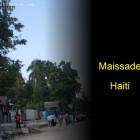ADVERTISEMENT
Agriculture - Haiti Observer Blog
Agriculture, Haiti Observer Blog. Read the following articles about Agriculture
Food Subsidies or Agricultural Investment? Which is Best for Haiti's Economy?
Food aid has been delivered to Haiti for the past 60 years, in two decades 1.5 million tons. Seven million people out of a population of 10 million suffer from hunger, and 1.5 million suffer acute chronic malnutrition. Infrastructure weaknesses, waste, and "the perverse effects" concerning food aid drive the crisis.
The government of Haiti (GOH) and outside donors pay no attention to the agricultural sector, pertaining to its growth and sustainability. The industry accounts for one-quarter of gross domestic product (GDP), but that figure has dropped. For many decades, scant investment from GOH and outside donors has occurred. Conversely, food-aid funding outpaces agricultural funding by more than 50%.
Haiti's Food Shortage Crippling Poor Families
Haiti has been bracing for an extreme food shortage, and it is arriving as the June and July harvests are set to begin. This year's rainfall is anticipated to be well below average. The Spring-Summer harvest season is important because crop yields comprise two-thirds of the harvest that contributes to the island's yearly food output.
Other factors causing agricultural underproduction include 2012's drought and two major hurricanes that hit that year as well. Of the 10 million people living on the island, 75% of them exist on barely $2.00 a day. Of this figure, 1.5 million are suffering from malnutrition, 82,000 of them pre-schoolers. Unfortunately, the country experiences one of the highest levels of child hunger in the Western Hemisphere, which contributes to its high ranking on the failed states index.
Brother Franklin Armand - Pandiassou, Haiti
With their belief that the Gospel cannot exist in tandem with misery CPFSI, and its founder Brother Franklin Armand, began a program that has turned life around for the inhabitants of one village in the Haitian city of Hinche.
With the entire country facing economic difficulties, exacerbated by the vicious cycle of agricultural deforestation, residents of Pandiassou, a small settlement in Haiti's Central Plateau, have benefited from the efforts of the missionary and their campaign to turn around the ability of the peasantry to sustain themselves in today's socio-economic climate.
Started over 25 years before, the Congregation of Little Brothers and Sisters of the Incarnate (CPFSI) first began by aiding the peasantry to feed itself. Once the immediate needs were met they set about making this abundance self-sustainable and stamping out the crippling dependency on food aid. What they established was a Konbit-like system of community farming that maximized the efficiency of the community's production. Unlike a traditional Konbit, the peasants are instrumental in the planning stages, which manifests in a more successfully cooperative undertaking.
Arcahaie, Historical Heritage and plantain capital - Li pwodi Anpil Bannann
Haiti has a lot of popular cities and municipalities, one of which is the town of Arcahaie in the Arrondissement of Arcahaie. This town is one of the two that make up the entire arrondissement, while Cabaret is the other municipality. It houses more than 106,500 people and is a recognized town.
Arcahaie nan awondisman Arcahaie. Vil sa a se youn nan de a ki fè moute awondisman an tout antye, Cabaret se lòt minisipalite a. Plis pase 106.500 moun Ap Viv ladan-Li.
Arcahaie's popularity is mainly attributed to its historical heritage, as a lot of significant incidents in the past occurred here. One of them is the memorable 1803 Congress, wherein the unity if Haiti's black people and mulattos was signified. It can be recalled that the country's founding father, Jean-Jacques Dessalines, replaced the French flag with a blue and red flag after tearing it apart during the Congress. It was the first time in three years of revolution that Haiti's unity had been symbolized.
New Bwe Kafe Coffee Shop opened in Washington Street, Hoboken
Hoboken owners of Bwe Kafe, Evan and Dale Ryan, are capitalizing on America's fervent coffee culture to help Haiti recover from the devastation of 2010's earthquake. They started their foundation, Love for Haiti, and brainstormed for a profit-making venture to support it. When they realized a community coffee house could be successful, they drew up plans immediately. It took them a mere four months from idea to re-tooling the venue to open their business, with help from their mother, who owns the building.
Bwe Kafe, meaning "to drink coffee" in French Créole, orders its fair-trade coffee from La Columbe, who buys the coffee beans from Haiti coffee cooperatives. The coffee house showcases Haitian arts and crafts and encourages patrons to form discussion groups in its performance space.
Bill Clinton at the head of an Agricultural Investment Delegation
Former US President Bill Clinton acts as the United Nation's special envoy to Haiti. His duties have taken him on two trips to the country so far this year. First, in January, he came for the 3-year anniversary of the devastating 2013 earthquake, which took place shortly after his tenure started. His latest visit, a two-day event that consisted of site visits and a donation announcement, on March 10 & 11 saw him accompanied by a nearly two-dozen strong delegation of potential investors from the restaurant, perfume and lingerie industries.
During his visit, he spoke about the controversies and misfortune faced by the country, but stressed that Haiti is still replete with 'staggering potential.' It's a sentiment also expressed by Haitian President Michel Martelly who's 'Haiti is open for business' slogan was designed with luring potential investors from around the world in mind. While they are optimistic about foreign investments being the key to rebuilding Haiti, analysts at home and abroad warn that the country's flawed justice system and its archaic banking practices don't instill confidence in investors. Further concerns are the advisories by the U.S. government that warn potential visitors about concerns of health, security and a lack of proper infrastructure.
Haiti, the fifth-largest importer of American rice
Haiti is experiencing an imminent food crisis, which has at its core the destruction of rice farming. The agricultural sector of Haiti, made up of subsistence farmers, cannot compete in an international market overrun with poor quality imports, especially rice, Haiti's number one staple.
Back in the 1970s, rice cultivation was a thriving industry, requiring no foreign imports to meet domestic needs. But that changed at the start of the 1990s. An attempted coup against then-President Aristide set off global trade embargos, stifling Haiti's export market. At this juncture, cheap imports from abroad came in droves. Haiti, a desperately poor country, has needed development banks' aid. They drove a hard bargain, enforcing a lower import tariff, from 50% to 3%. This negatively impacted the economy, because it became more affordable to import U.S. rice than to farm it domestically.
The agricultural system of Kombit in Haiti
A well known staple of Haitian culture and society the Kombit system allows, through the collaborative effort of members of the community, the cashless exchange of agricultural goods and supplies. The emphasis of the concept is the sharing of products in a communal sense, not selling for profit. This way is not conducive to exportation, as most of the produced items are consumed within the area in which they are produced.
Ordinarily, a farmer will announce a planned Kombit day, selecting one fit for planting a specific crop. Invitations are extended to as many as he can support and tasks are meted out based on ability--with men responsible for digging and heavy lifting, and sex--with women and children doing easier work such as planting seeds. The work becomes an even greater benefit to the community with the unity it provides through the singing and joke telling that accompanies a Kombit. Participants are fed three meals for the day and share in the harvest they have helped to plan and plant.
Thiotte offers best Haitian Coffee
Residents in the town of Thiotte in the Arrondissement of Belle-Ense heavily rely on the town's booming coffee industry. Many residents here are coffee farmers who get support from an organization called Root Capital. Under its small-business model program COOPCAB, rural farmers work together in order to increase and ensure the quality production of coffee beans. Coffee farmers in Thiotte grow Arabica beans.
Rural farmers also receive around 100,000 coffee and tree seedings from COOPCAB and this supply allows them to maintain production. Not only that, COOPCAB also encourages Thiotte farmers to follow sustainable farming practices so that the production of coffee in the town remains strong and steady.
Saint-Jean-du-Sud, Strong Farming Community
Saint-Jean-du-Sud, a cityship in the Port-Salut Arrondissement, under the Sud Department of Haiti, is home to 23,870 inhabitants. Located at sea level, it lies on the southern-most tip of the Tiburon Peninsula near its western end. Three divisions make up Saint-Jean-du-Sud: Debouchette, Tapion, and Trichet. A cluster of villages lies close by Saint-Jean-du-Sud: Coateaux, La Ferme, Durant, Bel Air, and Petite Riviere.
Farming is one of the primary income-generators of the small village of Saint-Jean-du-Sud, with bananas and pineapples producing the largest crop-yields. The farming community is close-knit, sharing resources among themselves to derive higher incomes. Another source of income for the village is fishing and the operation of fish hatcheries.
Our objective is to share with you news and information about Haiti and the people of Haiti. Traditions, habits and the way we were or grew are alive in this site. We highly recommend that you Subscribe to our Newsletter and also share with us some of the things that are memorable and made us unique people.

 Maissade, Haiti
Maissade, Haiti  Black Friday Shopping Season
Black Friday Shopping Season  La Chapelle, Haiti
La Chapelle, Haiti  Haitian Thanksgiving
Haitian Thanksgiving  Battle of Vertieres
Battle of Vertieres